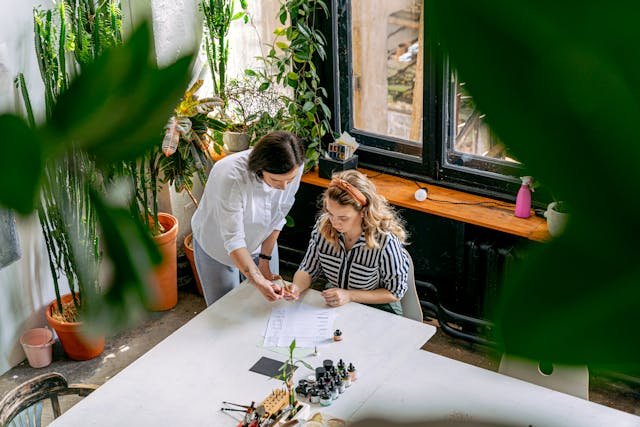The way we work has undergone a significant transformation in recent years, with remote and hybrid work schedules becoming the new norm. Our homes now double as offices, making the design of our workspaces more important than ever. Creating a space that stimulates productivity, fosters creativity, and supports our well-being is essential for success in this new work environment.
To build the perfect workspace, it’s essential to first understand how you actually use your workspace. Are you a creative thinker who thrives on inspiration boards and sketch pads, or do you need a calm, distraction-free zone for deep focus? By defining your work style, you can tailor your workspace to meet your specific needs.
One often overlooked but powerful element in any workspace is lighting. Natural light has been shown to increase energy levels and regulate our circadian rhythm, promoting overall well-being. Placing your desk near a window and using light-filtering curtains can maximize the benefits of natural light. Additionally, consider using LED lighting systems that mimic the natural progression of daylight to keep your circadian rhythm in sync, even during the darker winter months.
Color also plays a crucial role in creating an inspiring workspace. Different colors can have a psychological effect on how we feel and function. Soft neutrals like warm beige or light gray can create a calming background, while bolder accents like terracotta or deep navy can stimulate creativity. Adding your favorite colors through wall art, accent walls, and textiles can boost your mood and productivity.
Ergonomics is another key aspect of a productive workspace. By choosing ergonomic furniture that supports your posture and comfort, you can prevent long-term health issues and enhance your overall well-being. Today’s ergonomic design pieces combine wellness with visual appeal, ensuring that your workspace is both functional and aesthetically pleasing.
Creating a sensory environment that engages all five senses can further enhance your workspace. Incorporating calming scents, soft textures, and comfortable materials can promote relaxation, reduce fatigue, and improve focus. When your senses are supported, your mind can better concentrate, leading to increased productivity and overall well-being.
In conclusion, designing an inspiring workspace is essential for success in today’s work environment. By paying attention to details like lighting, color, ergonomics, and sensory elements, you can create a space that not only looks good but also supports your focus, creativity, and well-being. Investing time and effort into designing a workspace that works for you is an investment in your productivity, comfort, and long-term success.


